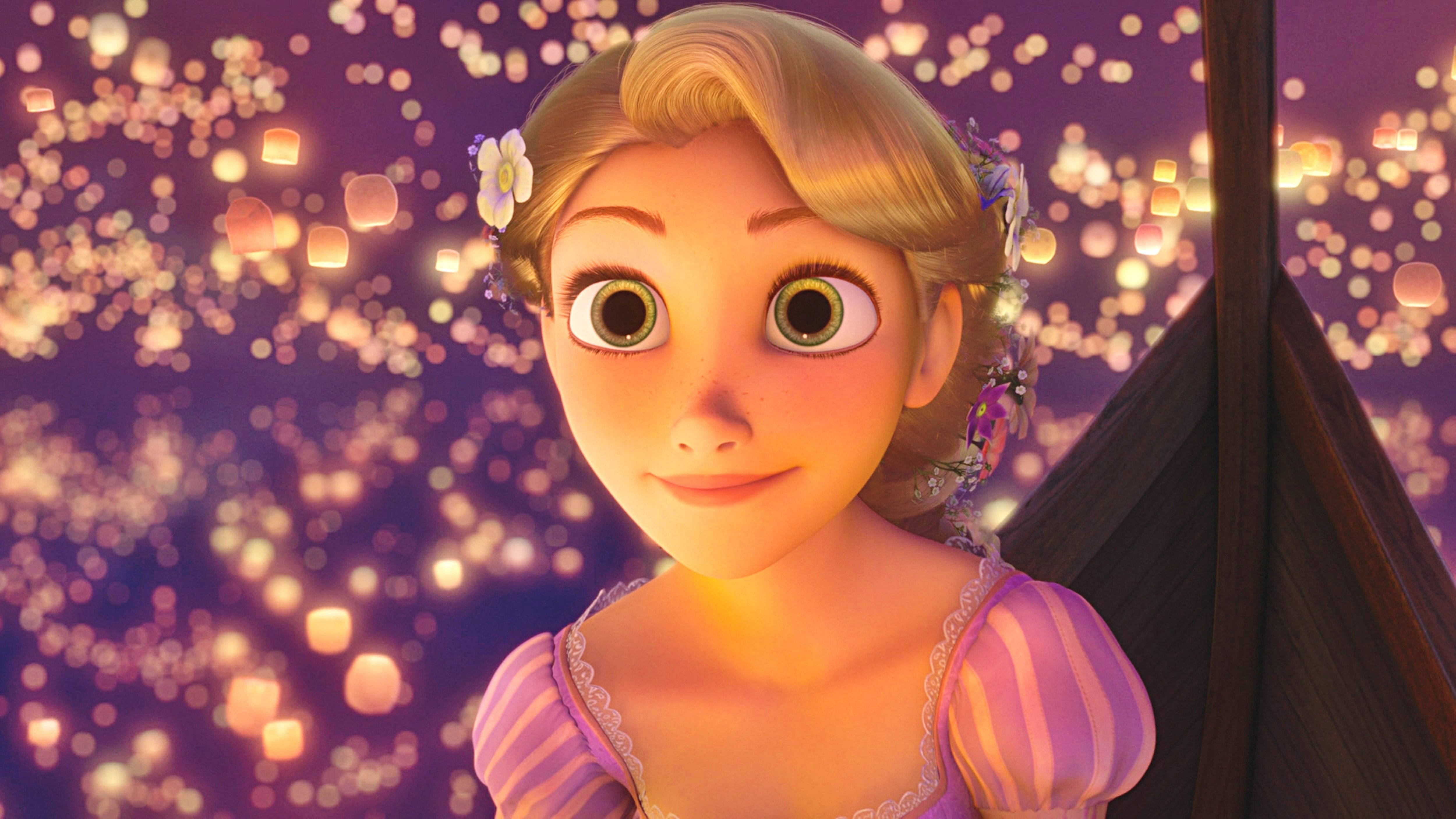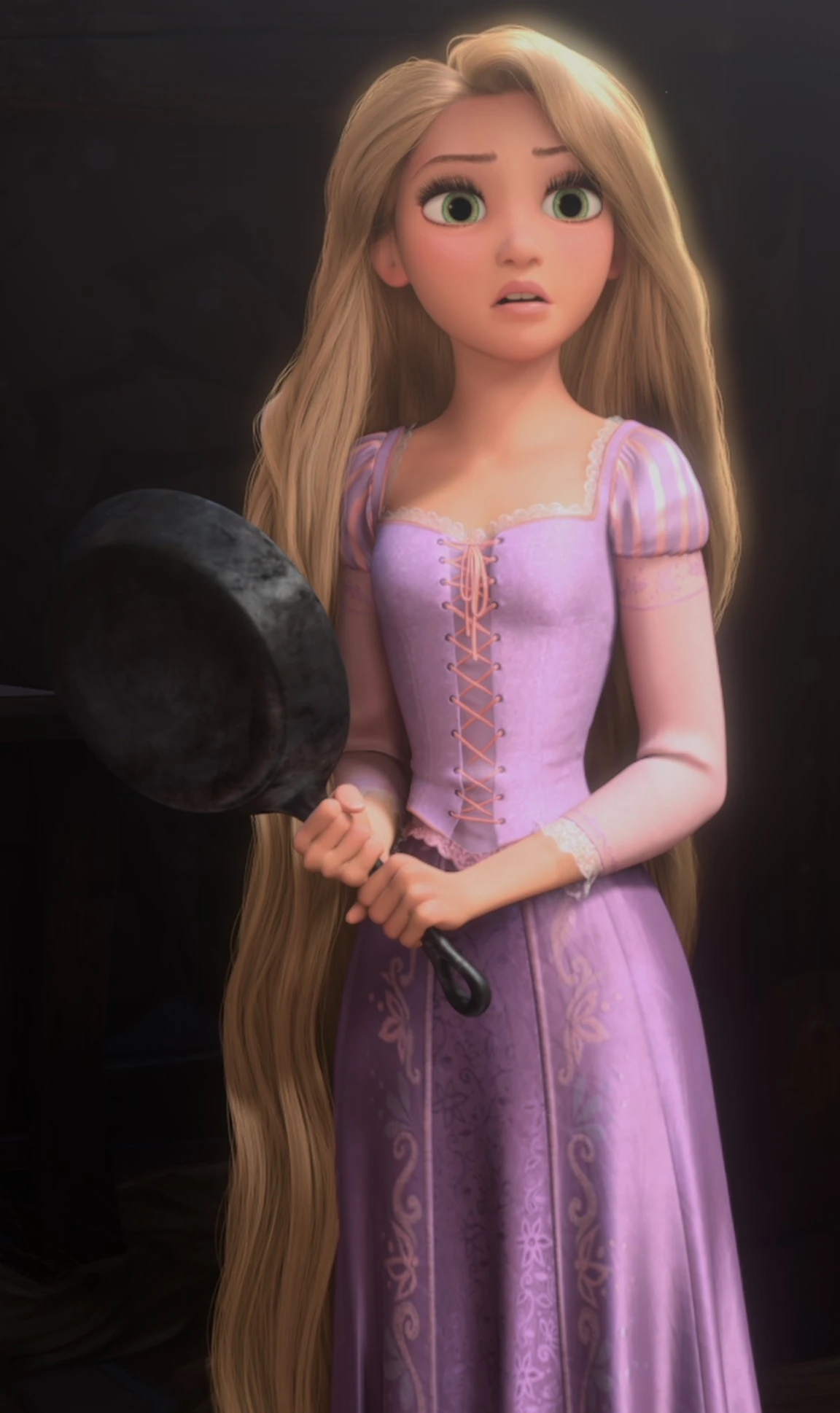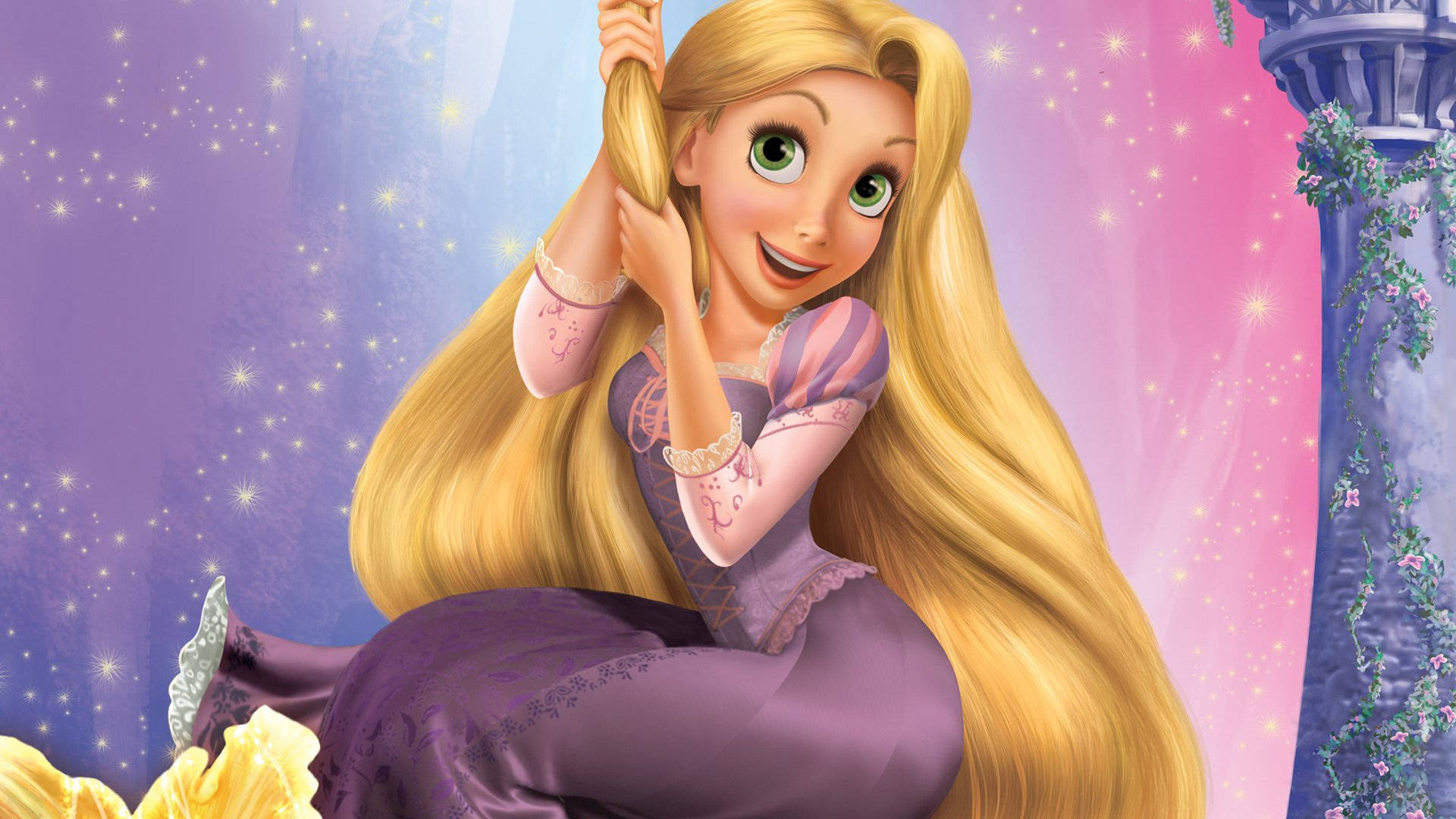Imagine a story, a truly old one, about a young woman whose hair was something out of a dream. It was very, very long, and it held a kind of magic, or so it seemed. This tale, you know, has been around for ages, first put down on paper by the Brothers Grimm back in 1812, a German fairy tale they called "Raiponce" or sometimes "Persinette." It's a story that, in some respects, has truly captured people's hearts for centuries, showing how a simple idea can truly last.
This isn't just any story; it's one that has, more or less, been told and retold, finding its way into our collective memory. We think of a beautiful young woman, shut away, with hair that just keeps growing and growing. It’s a bit of a classic, really, bringing up thoughts of isolation and, eventually, a chance at freedom. The image of that impossibly long hair, usually described as a beautiful golden color, is just so iconic, a visual that stays with you, actually.
And then, you know, Disney came along and brought this character to life in a way that truly made her feel new again. Their animated film, "Tangled," from 2010, gave us a Rapunzel who was not just a princess but also a narrator, full of spirit and curiosity. It's interesting how a story can, in a way, evolve and still keep its core magic, isn't it? This particular version really made her, and her incredibly long, magical golden hair, a household name for a whole new generation.
- Khalil Rountree Religion
- San Fran Chronicle Fake Link Prank
- Shania Twain Daughters Name
- El Pirata De Culiacan Muerte
- Gibby I Carly
Table of Contents
- The Story of Rapunzel - A Glimpse into Her World
- What Makes Rapunzel's Golden Hair So Special?
- The Allure of Rapunzel's Long Hair - Is Brown an Option?
- What Can We Learn from Rapunzel's Story?
The Story of Rapunzel - A Glimpse into Her World
The story of Rapunzel is, you know, a very old one, deeply rooted in German folklore. It was, as a matter of fact, one of those tales that the Brothers Grimm made sure to write down and share with the world back in 1812. It tells of a young woman, Rapunzel, who was, by all accounts, the most beautiful child anyone had ever seen. Her beauty was truly something to behold, setting her apart from everyone else, and this was, in a way, both a blessing and a bit of a challenge for her.
This young woman's life took a pretty dramatic turn when she was just twelve years old. At that age, a witch, a rather stern and unyielding figure, took her and shut her away. She was placed inside a tower, a tall structure standing alone in the middle of a dense wood. This wasn't just any tower, though; it was one built without any steps leading up to it and without a door at its base. Her only connection to the outside world was, basically, a single small window, high up. It was, in short, a very isolated existence, cut off from everything and everyone she might have known.
The tale then tells of a prince who, through some twist of fate, discovers this tower and the young woman within. He learns of her incredibly long hair, which she lets down from her window, allowing him to climb up and visit her. This act of climbing, you know, becomes a regular occurrence, a secret way for them to meet. It's a story that, in a way, speaks to longing and connection, even when faced with significant obstacles. The image of her hair, flowing down, is truly central to the entire narrative, serving as her only bridge to the world outside her confinement.
Who is Rapunzel - Her Beginnings
Rapunzel, as a character, started out as a figure in a German fairy tale, a creation of the Brothers Grimm. She was, as I was saying, described as a child of exceptional beauty. This initial portrayal, really, set the stage for her character, making her someone who was both precious and, in a way, vulnerable. Her story, as first written, focused on her life in the tower and the unique way she interacted with the world beyond her window.
Fast forward quite a bit, and Rapunzel found a whole new life in the Disney animated film, "Tangled," which came out in 2010. In this version, she's not just a beautiful young woman; she's the main protagonist, the one whose adventures we follow. She's also, actually, the narrator of her own story, giving us a direct insight into her thoughts and feelings. This interpretation made her a very active and engaging character, full of personality and a desire to see the world.
The film establishes her as Princess Rapunzel, the rightful heir to the kingdom of Corona. A key part of her identity in this portrayal is, of course, her hair. It's known for being incredibly long, and it possesses magical qualities, glowing with a golden light. This magical golden hair is, basically, what makes her unique in this particular telling, setting her apart from other princesses and giving her a special role in her kingdom's history. It's quite a distinctive feature, really, and it plays a very important part in the plot.
What Makes Rapunzel's Golden Hair So Special?
When we talk about Rapunzel, it's almost impossible not to talk about her hair. It's her most famous feature, and for good reason. The source text, you know, consistently describes it as "beautiful blonde" or "long magical golden hair." This golden color isn't just a detail; it's a very significant part of her identity in the stories. It's what the prince sees, what the witch uses, and what makes her stand out.
The hair isn't just long; it's described as "extremely long," so long that it can reach from a high tower window all the way down to the ground. This extraordinary length, naturally, makes it a truly remarkable physical attribute. It's not just hair; it's a tool, a means of access, and a symbol all rolled into one. The idea of hair being so incredibly long and strong enough to support a person climbing it is, well, quite a fantastical concept, isn't it? It truly stretches the imagination.
In the Disney version, the hair also has a magical quality. It glows, and it can heal, which adds another layer of wonder to it. This magical aspect, in a way, elevates the hair from just being a physical feature to something truly extraordinary. It’s not merely a beautiful accessory; it's a source of power and, in some respects, a key element of her destiny. This magical golden hair is, therefore, central to many of the events that unfold in her story.
How Did Rapunzel Get Her Long Hair?
The origin of Rapunzel's long hair, in the classic fairy tale, isn't really explained as a specific event where she 'got' it. It's more that she simply possesses it, and it grows to an extraordinary length. The witch, who keeps her in the tower, uses this natural attribute of hers. The story implies that her hair was always meant to be this way, a unique characteristic that becomes central to her confinement and, eventually, her liberation. It's just a part of who she is, basically.
In the Disney animated film "Tangled," however, the reason for her long, magical golden hair is given a very specific backstory. It's revealed that her hair possesses its magical properties because her mother, the Queen, consumed a magical golden flower while she was ill. This flower, you know, had healing properties, and its magic transferred to Rapunzel, making her hair a source of immense power. This explanation, actually, gives a very clear reason for why her hair is so special and why it's so coveted.
So, while the traditional tale just presents her with the hair, the modern retelling gives it a very clear magical origin. This distinction is quite interesting, actually, showing how stories can be adapted to provide more context. Regardless of its origin, the hair remains a central element of her story, a key to her interactions with the world and the challenges she faces. It's a very striking feature, really, and it defines much of her experience.
The Allure of Rapunzel's Long Hair - Is Brown an Option?
The image of Rapunzel's long, flowing hair is, you know, incredibly powerful. While the traditional stories and the popular Disney film describe her hair as golden or blonde, the idea of "Rapunzel brown long hair" often comes up in conversations about hair goals or different interpretations of the character. It's interesting how a concept can transcend its original depiction, isn't it? People are often inspired by the sheer length and beauty, regardless of the specific shade.
The appeal of very long hair, whether it's golden, black, or brown, is pretty universal. It suggests a certain kind of beauty, a classic elegance, and perhaps even a touch of fantasy. For many, the idea of having "Rapunzel brown long hair" might be a personal aspiration, a desire to achieve that same dramatic length and flowing quality, but in a color that suits them or simply appeals to their aesthetic. It's a way of, basically, making the fairy tale concept a little more personal and relatable.
So, while the original character is known for her golden locks, the phrase "Rapunzel brown long hair" speaks to the broader influence of her story. It shows how the core idea of incredibly long, beautiful hair has, more or less, become an archetype. People can, in a way, imagine this hair in any color, adapting the classic image to their own preferences or visions. It's a testament to the lasting power of the story's visual impact, really.
What Does "Rapunzel Brown Long Hair" Really Mean?
When someone talks about "Rapunzel brown long hair," they are, in some respects, usually referring to the concept of hair that is exceptionally long, flowing, and well-cared for, but specifically in a brown shade. It's a way of describing a particular hair aesthetic that draws inspiration from the fairy tale character's most famous attribute. It's not necessarily saying Rapunzel herself had brown hair, but rather using her as a benchmark for extreme length and beauty.
This phrase, you know, captures the imagination. It conjures up images of hair that could, perhaps, cascade down a tower, hair that seems almost endless. The addition of "brown" simply specifies the color, making it a very particular vision of that fairy tale ideal. It's about wanting that kind of dramatic, impressive length, combined with the rich, earthy tones of brown. It's a very specific, yet widely appealing, aesthetic.
So, in essence, "Rapunzel brown long hair" is a descriptive phrase used to convey a certain type of hair goal or style. It combines the legendary length associated with Rapunzel with a specific color choice, allowing for a personalized interpretation of a classic fairy tale element. It's a pretty clear example of how stories can influence our ideas of beauty and style, even when we adapt the details a little bit.
What Can We Learn from Rapunzel's Story?
The story of Rapunzel, in all its forms, offers quite a few things to think about. It’s, you know, a tale that touches on themes of confinement and the longing for freedom. Rapunzel is locked away, cut off from the world, and her greatest desire is to experience life outside her tower. This longing for connection and discovery is, basically, something many people can relate to, even if their "towers" are just everyday limitations.
The story also highlights the power of hope and persistence. Despite her isolation, Rapunzel maintains a spirit of curiosity and a desire for something more. The prince, too, shows persistence in his efforts to reach her. Their combined efforts, you know, eventually lead to a change in their circumstances. It's a very classic narrative arc, showing that even in difficult situations, there's always a chance for things to improve if you keep trying.
And, of course, the hair itself is a central element, serving as both a means of imprisonment and a path to escape. It's a very powerful symbol, really, representing both her vulnerability and her unique strength. The story, in a way, shows how something seemingly simple can hold so much significance and play such a crucial role in a person's life. It's quite a compelling part of the narrative.
Why Does Rapunzel's Long Hair Still Captivate Us?
Rapunzel's long hair continues to fascinate people for several reasons. For one, it's a truly striking visual. The idea of hair that reaches such incredible lengths is, well, pretty amazing and a little bit fantastical. It's something that, in a way, goes beyond ordinary experience, making it memorable and iconic. This visual appeal is, actually, a huge part of its lasting power, capturing the imagination of anyone who hears the story.
Beyond the visual, the hair is a symbol of something grander. It represents, in some respects, beauty, strength, and even a connection to something magical. In the original tale, it's her only link to the outside world, and in the Disney version, it holds immense healing power. This dual nature, as both a physical attribute and a symbolic element, makes it a very rich and interesting part of the story. It's not just hair; it's a key to her entire existence.
Ultimately, the enduring appeal of Rapunzel's long hair, whether it's golden as in the stories or imagined as "Rapunzel brown long hair," lies in its ability to spark wonder and represent aspiration. It's a classic element of a beloved fairy tale that continues to inspire dreams of beauty, freedom, and perhaps, a touch of magic in our own lives. It's a pretty timeless image, really, that keeps finding its way into our thoughts and conversations.
This article has explored the enduring tale of Rapunzel, from its origins as a German fairy tale recorded by the Brothers Grimm in 1812, to her portrayal as the beautiful, golden-haired princess in Disney's 2010 animated film "Tangled." We looked at her initial depiction as the most beautiful child, imprisoned in a tower without steps or a door, only a small window, and how a prince would visit her by climbing her extremely long hair. The discussion touched upon her role as the protagonist and narrator in "Tangled," and her identity as the princess of Corona with magical, golden hair. We also considered the broader concept of "Rapunzel brown long hair," acknowledging the popular desire for such a style while clarifying that the original character's hair is described as golden or blonde in the source material. The piece highlighted the symbolic significance of her hair as both a means of confinement and a path to freedom, and the universal themes of longing, hope, and persistence found within her story.
Related Resources:



Detail Author:
- Name : Dr. Timothy Daniel
- Username : nquitzon
- Email : rau.leo@hotmail.com
- Birthdate : 1991-02-27
- Address : 768 Kuhn Parkway Suite 536 West Abagailview, MS 33769
- Phone : 774.463.4865
- Company : Dietrich-Lebsack
- Job : Food Tobacco Roasting
- Bio : Et porro sit amet sequi sit doloremque. Quaerat eos itaque modi aut. Rem qui nam incidunt officiis. Sit quis ut incidunt.
Socials
twitter:
- url : https://twitter.com/bret_harber
- username : bret_harber
- bio : Itaque ipsa quibusdam fugiat et. Minima nemo quasi deserunt ut voluptatem porro. Debitis non laboriosam in in possimus. Eum aut et harum tempora et aut.
- followers : 5902
- following : 223
instagram:
- url : https://instagram.com/bretharber
- username : bretharber
- bio : Ea beatae ea aliquid explicabo voluptatum laboriosam nisi. Quia accusamus occaecati id.
- followers : 4676
- following : 2066